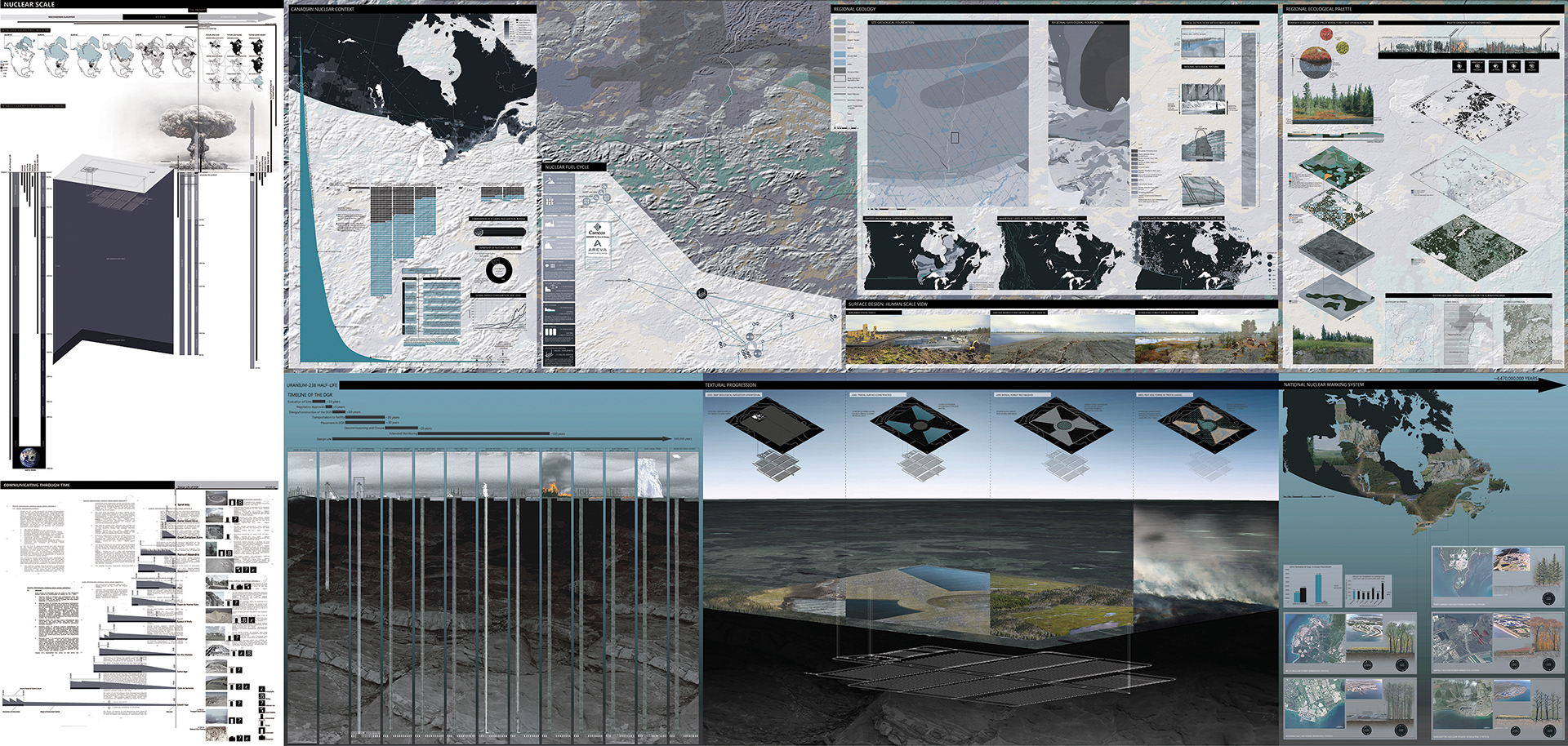Nuclear Scale
University of Toronto, John H. Daniels Faculty of Architecture, Landscape, and Design
Department of Landscape Architecture
Landscape Architecture VI
Design Studio Thesis
Department of Landscape Architecture
Landscape Architecture VI
Design Studio Thesis
Thesis: Katie Strang
Advisor: Fionn Byrne
Advisor: Fionn Byrne
Description:
On July 15, 1945 the explosion of the Trinity nuclear bomb in New Mexico forced the world into a new era, the Nuclear Age, and arguably the Anthropocene. Nuclear technology has given humans access to both unprecedented generative and destructive power. The by-products of this clean energy, spent nuclear fuel cells, remain dangerously radioactive for hundreds of thousands of years, much longer than recorded human history. Homo sapiens have finally found a way to appear as more than a blip on the geological timescale. Always a leading nuclear nation, Canada’s Federal government and the Nuclear Waste Management Organization (NWMO) are currently siting a deep geological repository (DGR) as part of our long term strategy for managing this waste. In the coming decades all of our spent nuclear fuel cells will be permanently consolidated into this structure bored down 500m into the Canadian Shield. However, marking the surface of this space through time, and our choice to make nuclear power a pillar of our energy plan is a landscape problem. Over the 100,000 year intended life of the DGR, marking it becomes a design problem without a known user, who will likely not speak an existing language or recognize our symbols.

CREDITS
Katie Strang.